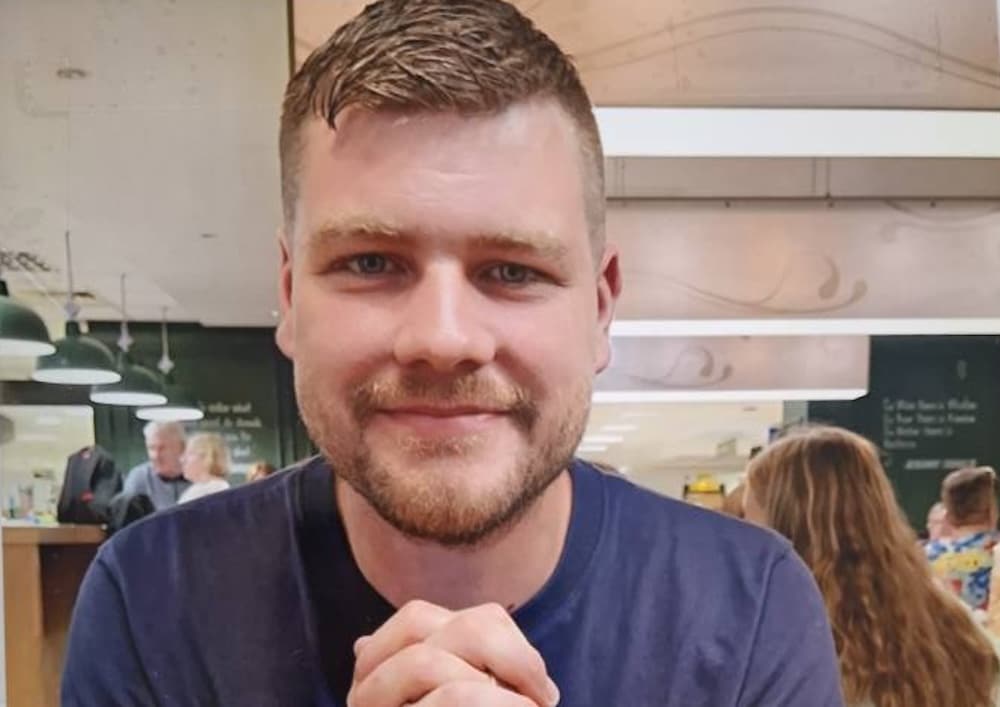
A heartbroken Portadown mother has spoken of the devastating loss of her son after he died from taking a powerful synthetic drug bought on the dark web – as a coroner warned that the rise of these so-called nitazenes is becoming an “emerging threat” in Northern Ireland.
An inquest into the death of 33-year-old Jay Woolsey, held at Banbridge Courthouse, heard that the young father-of-one was found dead in his Portadown flat on August 9, 2024, after taking the substance reported to be 20 times stronger than fentanyl and several times more potent than morphine.
Jay’s mother, Gillian McCann, told the inquest how she discovered her son’s body in an armchair in the living room after forcing entry to his home, with the help of members of the public, on the Tandragee Road.
She said Jay had last been seen by a neighbour at approximately 6:30pm on the evening before.
Explaining how Jay had been in the days and weeks leading up to his death, Ms McCann said: “He was happy, he was relaxed. He had a new job, a new flat, and was really looking forward to the future. He’d been engaging with counselling and trying so hard to turn things around.”
Ms McCann described Jay as a “charismatic and lovely” young man who loved music, played piano and guitar, and was a devoted father to his young son.
“We really believed there was going to be a new, happier Jay,” she said of her son who had struggled with his mental health from his early teenage years. “He’d even texted me two nights before, telling me how well his counselling had gone.”
However, Jay had unknowingly ordered a lethal nitazene drug – a synthetic opioid significantly stronger than heroin or fentanyl – through the dark web.
Detective Constable Simon Duffin, of Lurgan CID, told the inquest that searches found on Jay’s computer suggested he had accessed hidden online drug markets.
“The drugs were posted to his home,” he said. “These sites are not like normal retail purchases – there’s no returns policy, no way to know what you’re getting.
“The dark web searches were basically just a jumbled-up mass of letters and numbers that looked almost like computer code. They don’t tell you what the website is or what the search was in relation to.
“And many of these online drug operations are wholesale – if one is shut down, another simply takes its place.”
He added: “These particular postal orders can come from anywhere, and what people are ordering may not even be what is being supplied to them, or what they believe they’re ordering. Unfortunately, Jay is what we see as a result.”
Forensic scientist Amy Eleanor Quinn confirmed that the substance found was a new psychoactive drug with no legitimate medical use.
“Nitazenes are illicitly manufactured and sold as tablets, powders or nasal sprays,” she explained of the drug, which has been appearing more frequently in Northern Ireland over the past 18 months. “They can cause sedation, respiratory failure and death. People often don’t know what they’re taking, or how strong it is.”
Ms Quinn told the court that the drug came in the form of small, bright yellow tablets.
When questioned by Jay’s mum on what he might have thought he was purchasing, Ms Quinn said: “I don’t know what he thought he was buying, but it wouldn’t be beyond the realms of possibility that he had no idea what it was he was getting.”
Dr Mark Egan, who carried out the post-mortem examination, described how the powerful sedative effect of the nitazene would have rapidly overcome Jay, causing him to fall asleep, significantly impairing his lung function, and leading to bronchopneumonia, which “would quickly become fatal within a few hours”.
Jay’s mother issued a heartfelt plea to others – especially young people – not to experiment with drugs.
“It’s completely horrific and life-changing,” she said of her son’s death. “Our lives are just completely devastated, and we will never be okay again without having Jay here. His wee boy is only 13 – he’s angry, he’s sad, and he doesn’t have his dad. I just want people to understand how dangerous these drugs are.”
She added that her family would continue to speak openly about Jay’s death to raise awareness.
“I still struggle to believe that there was a single drug capable of doing that, because I just thought of all the people in the past who have lived – rock stars and film stars, known to have taken so many drugs – and got to their 60s and 70s.
“What on earth is strong enough to have done this to Jay? It just didn’t make sense to me.”
Ms McCann added: “It’s maybe like talking to a wall, saying to kids ‘don’t take drugs’, but since Jay died, I’ve been very vocal and open and honest about the dangers of drugs.
“We don’t have any shame in how Jay died. We don’t have any shame in the fact that he had mental health issues. I’m just constantly trying to make more people aware, and for people to really recognise when it is an addiction and when they need to get help.
“I would just love there to be a lot more help for people out there and shorter waiting lists than what there are now.”
Coroner Anne-Louise Toal concluded: “I find that sometime between 6:30pm on August 8 and August 9, 2024, the deceased had taken several drugs, including nitazenes and methamphetamine.
“As a result of the depressing effects of the nitazene on his respiratory system, the deceased fell asleep and developed bronchopneumonia and suppurative bronchitis, which ultimately caused his death. I find the methamphetamine taken further diminished the deceased’s ability to withstand the effects of this bronchitis and bronchopneumonia.”
Coroner Toal turned her attention to “the emerging threat of nitazenes as a drug of abuse”.
“Their potency and risk of fatal overdose cannot be overstated, which is evidenced by their increasing appearance in drug-related deaths over the last two years.
“The dangers of drugs are well known; however, the additional danger of buying drugs online is also becoming more and more apparent, and it should be stressed that for anyone doing so, there is a considerable risk that what you believe you are buying may not be what you are getting.
“It is clear that the death of Jay, an otherwise healthy 33-year-old man, who should have been expected to have many years ahead of him, should serve to underline such dangers.
“I can only commend his mother and family for trying to raise awareness to prevent other families having to face the same devastating grief.”



